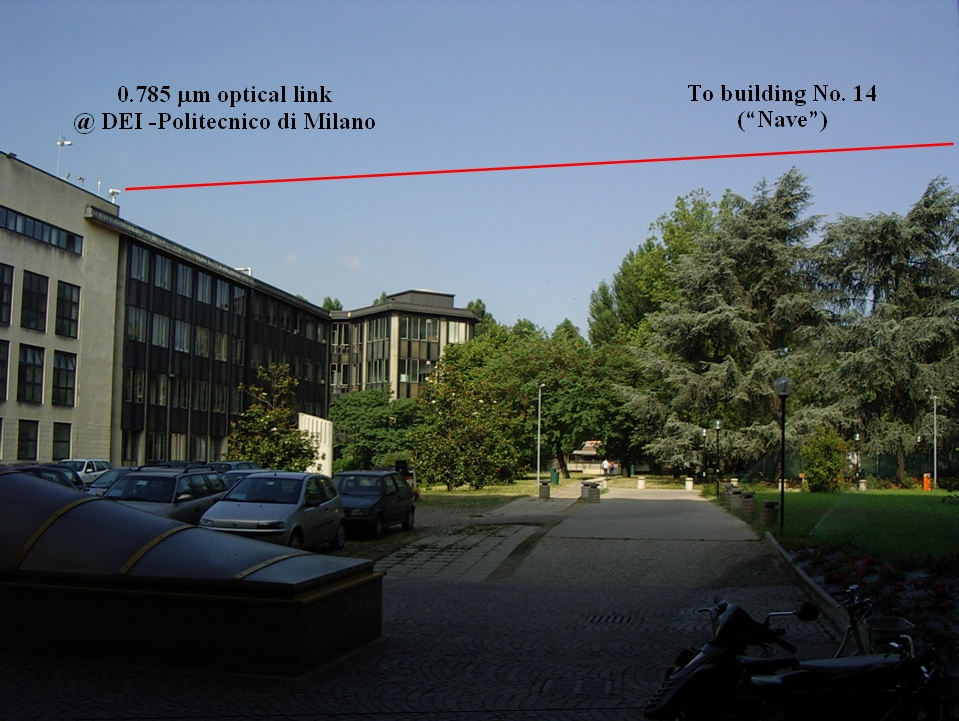The technology of Free-Space Optics (FSO) provides wireless ultra high-bandwidth connectivity over line-of-sight paths. The signal is obtained by modulating the light generated by a laser diode and it is subsequently conveyed into a narrow optical beam by a telescope or a lens which plays the same role as the transmitting antenna of a radio system.
While FSO is mainly being used for terrestrial links, space-to-space, and space-to-ground laser communications have been successfully demonstrated. Moreover, the usage of optical frequencies for deep-space communications is currently under investigation.
A major drawback of FSO is the sensitivity to adverse meteorological conditions (fog and clouds above all), that can significantly limit link availability when visibility is reduced or even in clear weather, due to the action of atmospheric turbulence.
Our work on FSO focuses on two research topics:
- Measurements of optical transmission.
- Modelling of the atmospheric channel.
A 785 nm optical link has been deployed in the Campus of Politecnico di Milano (the terminals being located on the rooftops of two buildings), and it is has been collecting measurements of laser attenuation under different atmospheric conditions for several years. A weather station, a visibility sensor and an ultrasonic anemometer have been installed as well at one side of the link to record ancillary atmospheric data.
The modelling issues include the elaboration of theoretical and empirical relationships for predicting laser attenuation from atmospheric quantities, and the processing of global/regional databases of atmospheric parameters (e.g. METEOSAT data) to assess the availability of FSO links and its dependence on the climate.

The FSO link installed in the Campus of Politecnico di Milano
